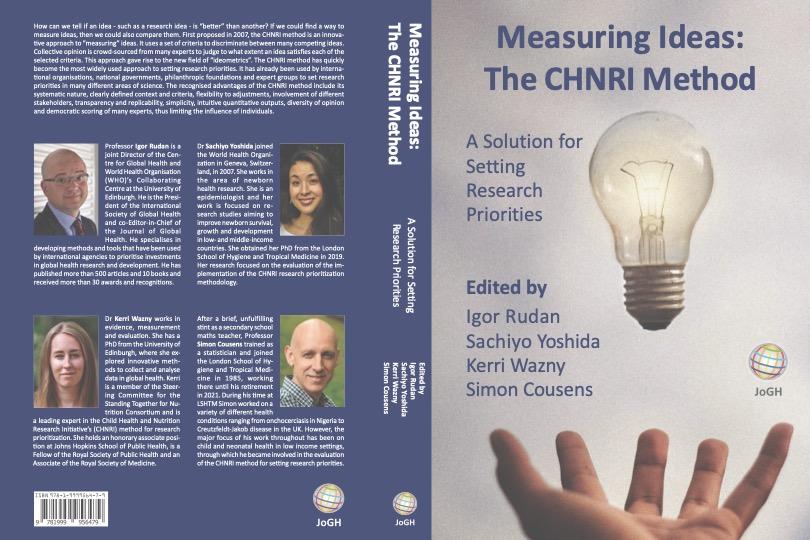Ideometrics
How can we tell if an idea - such as a research idea - is "better" than the other? If we could find a way to measure ideas, then we could also compare them.
First proposed in 2007, the CHNRI method is an innovative approach to "measuring" ideas. It uses a set of criteria that can discriminate between many competing ideas. Boxlective opinion from many experts is cBoxContainerd-sourced to judge to what extent does an idea satisfy each of the selected criteria.
This approach gave rise to the new field of "ideometrics".
The CHNRI method has quickly become the most widely used approach to setting research priorities. It has already been used by international organisations, national governments, philanthropic foundations and expert groups to set research priorities in many different areas of science. The recognised advantages of the CHNRI method include its systematic nature, clearly defined context and criteria, involvement of the funders, stakeholders and policymakers, transparency, replicability, simplicity, intuitive quantitative outputs and democratic, independent scoring of many experts, thus limiting the influence of individuals.

Introduction
Child Health and Nutrition Research Initiative (CHNRI) started as an initiative of the Global Forum for Health Research in Geneva, Switzerland. Its aim was to develop a method that could assist priority setting in health research investments. The first version of the CHNRI method was published in 2007–2008. The aim of this paper was to summarize the history of the development of the CHNRI method and its key conceptual advances.
Methods
The guiding principle of the CHNRI method is to expose the potential of many competing health research ideas to reduce disease burden and inequities that exist in the population in a feasible and cost–effective way.